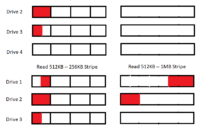Installing and Using the Neofetch Command | Linux Guide

Are you looking to display your system information in Linux but unsure how to go about it? The ‘neofetch’ command, much like a personal assistant, can simplify this task for you. Neofetch is a command-line utility that displays system information in a visually pleasing manner. It’s readily available on most package management systems, making the installation process straightforward once you understand the steps.
In this tutorial, we will guide you on how to install and use the ‘neofetch’ command on your Linux system. We will cover methods for both APT and YUM-based distributions, delve into compiling ‘neofetch’ from source, installing a specific version, and finally, how to use the ‘neofetch’ command and ensure it’s installed correctly.
So, let’s dive in and start installing ‘neofetch’ on your Linux system!
TL;DR: How Do I Install and Use the ‘neofetch’ Command in Linux?
To install ‘neofetch’ in Debian based distributions like Ubuntu, you can run the command
sudo apt-get install neofetch. For distributions like CentOS that use RPM package manager yum, you would run the commandsudo yum install neofetch.
# For Debian based distributions like Ubuntu
sudo apt-get install neofetch
# For RPM based distributions like CentOS
sudo yum install neofetch
# Output:
# Reading package lists... Done
# Building dependency tree
# Reading state information... Done
# The following NEW packages will be installed:
# neofetch
# 0 upgraded, 1 newly installed, 0 to remove and 0 not upgraded.
# Need to get 0 B/74.6 kB of archives.
# After this operation, 381 kB of additional disk space will be used.
# Selecting previously unselected package neofetch.
# (Reading database ... 160975 files and directories currently installed.)
# Preparing to unpack .../neofetch_7.1.0-1_all.deb ...
# Unpacking neofetch (7.1.0-1) ...
# Setting up neofetch (7.1.0-1) ...
# Processing triggers for man-db (2.8.3-2ubuntu0.1) ...
This is a basic way to install the ‘neofetch’ command in Linux, but there’s much more to learn about installing and using ‘neofetch’. Continue reading for more detailed information and advanced usage scenarios.
Table of Contents
- Understanding and Installing Neofetch in Linux
- Installing Neofetch from Source
- Installing Specific Versions of Neofetch
- Using Neofetch and Verifying Installation
- Exploring Alternative Methods for System Information Display
- Troubleshooting Common Neofetch Issues
- Unveiling Linux System Information
- Exploring the Relevance of System Information in Administration and Security
- Wrapping Up: Installing Neofetch for Efficient System Information Display
Understanding and Installing Neofetch in Linux
Neofetch is a command-line utility that displays information about your operating system, software, and hardware in an aesthetic and visually pleasing way. It’s like your system’s business card, showcasing your OS logo with other crucial details. It’s a handy tool for system administrators or anyone who needs to quickly check system details.
Now, let’s get to installing Neofetch on your Linux system. We’ll cover the process for both APT (Debian-based distributions like Ubuntu) and YUM (RPM-based distributions like CentOS).
Installing Neofetch Using APT
If you’re using a Debian-based distribution like Ubuntu, you can install Neofetch using the APT package manager. Here’s how you do it:
sudo apt update
sudo apt install neofetch
# Output:
# The following NEW packages will be installed:
# neofetch
# 0 upgraded, 1 newly installed, 0 to remove and 0 not upgraded.
# After this operation, 381 kB of additional disk space will be used.
In the above code block, the first command updates the package lists for upgrades and new package installations. The second command installs Neofetch on your system.
Installing Neofetch Using YUM
If you’re using an RPM-based distribution like CentOS, you can install Neofetch using the YUM package manager. Here’s how:
sudo yum check-update
sudo yum install neofetch
# Output:
# Installed:
# neofetch.noarch 0:7.1.0-1.el7
# Complete!
In the above code block, the first command checks for system and software updates. The second command installs Neofetch on your system.
Remember, you need to have administrative (sudo) privileges to install software on your Linux system. Once you’ve installed Neofetch, you can display your system information by simply typing neofetch into the terminal.
Installing Neofetch from Source
While package managers make installation easy, sometimes you may want to install the software from the source. This provides more control over the version and configuration of the software. Here’s how you can install Neofetch from source:
git clone https://github.com/dylanaraps/neofetch.git
# Output:
# Cloning into 'neofetch'...
# remote: Enumerating objects: 269, done.
# remote: Counting objects: 100% (269/269), done.
# remote: Compressing objects: 100% (180/180), done.
# remote: Total 269 (delta 132), reused 187 (delta 80), pack-reused 0
# Receiving objects: 100% (269/269), 2.75 MiB | 3.05 MiB/s, done.
# Resolving deltas: 100% (132/132), done.
This command clones the Neofetch repository from GitHub to your local system.
Installing Specific Versions of Neofetch
There may be situations where you need a specific version of Neofetch. This could be due to compatibility issues, or because a particular feature you need is only available in a certain version. Here’s how to install a specific version using APT, YUM, and from source.
Installing Specific Versions with APT
sudo apt install neofetch=7.0.0
# Output:
# The following packages will be DOWNGRADED:
# neofetch
# 0 upgraded, 0 newly installed, 1 downgraded, 0 to remove and 0 not upgraded.
# Need to get 74.6 kB of archives.
# After this operation, 0 B of additional disk space will be used.
This command installs version 7.0.0 of Neofetch on your system.
Installing Specific Versions with YUM
sudo yum downgrade neofetch-7.0.0
# Output:
# Resolving Dependencies
# --> Running transaction check
# ---> Package neofetch.noarch 0:7.0.0-1.el7 will be a downgrade
# ---> Package neofetch.noarch 0:7.1.0-1.el7 will be erased
# --> Finished Dependency Resolution
This command downgrades Neofetch to version 7.0.0 on your system.
Installing Specific Versions from Source
git clone https://github.com/dylanaraps/neofetch.git
cd neofetch
git checkout 7.0.0
# Output:
# Note: checking out '7.0.0'.
# HEAD is now at 04f2c5b Bump version to 7.0.0
This command checks out version 7.0.0 of Neofetch from the source code.
Here’s a summary of the differences between the versions:
| Version | Key Features | Compatibility |
|---|---|---|
| 7.1.0 | Added support for new distros | Most Linux distributions |
| 7.0.0 | Improved performance | Most Linux distributions |
Using Neofetch and Verifying Installation
Once you’ve installed Neofetch, you can use it to display your system information. Simply type neofetch into your terminal:
neofetch
# Output:
# Your system logo and information will be displayed.
To verify that Neofetch has been installed correctly, you can use the which command:
which neofetch
# Output:
# /usr/bin/neofetch
This command will return the path where Neofetch is installed, confirming that the installation was successful.
Exploring Alternative Methods for System Information Display
While ‘neofetch’ is a popular tool for displaying system information, there are alternative methods you can use. Let’s explore some of these alternatives, their advantages, disadvantages, and how to use them.
Screenfetch: A Neofetch Alternative
‘Screenfetch’ is another command-line utility that displays system information alongside your operating system’s logo. It’s similar to ‘neofetch’, but with fewer customization options. Here’s how you can install and use ‘screenfetch’:
# For Debian based distributions like Ubuntu
sudo apt-get install screenfetch
# For RPM based distributions like CentOS
sudo yum install screenfetch
# To display system information
screenfetch
# Output:
# Your system logo and information will be displayed.
‘Screenfetch’ is a great alternative if you prefer simplicity over customization.
Manual System Information Display
If you prefer a more hands-on approach, you can manually display system information using built-in Linux commands. For example, you can use the ‘uname’ command to display the system’s OS or kernel version:
uname -a
# Output:
# Linux myhostname 4.15.0-101-generic #102-Ubuntu SMP Mon May 11 10:07:26 UTC 2020 x86_64 x86_64 x86_64 GNU/Linux
This command returns the system’s kernel name, hostname, kernel release date, kernel version, machine hardware name, processor type, hardware platform, and operating system.
While these methods may not be as visually pleasing as ‘neofetch’ or ‘screenfetch’, they provide a deeper understanding of your system’s inner workings. However, they require a more technical understanding of Linux.
| Method | Advantages | Disadvantages |
|---|---|---|
| Neofetch | Visually pleasing, customizable, easy to install and use | May not be available in all repositories |
| Screenfetch | Visually pleasing, easy to install and use | Less customizable than Neofetch |
| Manual | Offers deeper understanding, no installation required | More technical, less visually pleasing |
While ‘neofetch’ is a fantastic tool, it’s always good to know your alternatives. Depending on your needs, ‘screenfetch’ or manual system information display might be more suitable. Experiment with these methods and find the one that works best for you.
Troubleshooting Common Neofetch Issues
While ‘neofetch’ is generally easy to install and use, you may encounter some issues. Let’s discuss some common problems and their solutions.
Neofetch Command Not Found
If you’ve installed ‘neofetch’ but receive a ‘command not found’ error when trying to use it, it’s likely that your system’s PATH does not include the directory where ‘neofetch’ is installed.
You can use the which command to verify if ‘neofetch’ is in your PATH:
which neofetch
# Output:
# /usr/bin/neofetch
If ‘neofetch’ is not in your PATH, you can add it using the export command. Replace ‘/path/to/neofetch’ with the actual path to ‘neofetch’:
export PATH=$PATH:/path/to/neofetch
Neofetch Not Displaying Correct Information
If ‘neofetch’ isn’t displaying the correct system information, it’s possible that your system’s packages are outdated. Update your system’s packages and try running ‘neofetch’ again:
# For Debian based distributions like Ubuntu
sudo apt-get update
sudo apt-get upgrade
# For RPM based distributions like CentOS
sudo yum check-update
sudo yum update
Neofetch Not Displaying Images
If ‘neofetch’ isn’t displaying images, it might be because your terminal emulator doesn’t support this feature. You can try installing a different terminal emulator, like ‘rxvt-unicode’, ‘xterm’, or ‘gnome-terminal’.
Remember, while ‘neofetch’ is a useful tool, it’s not the only way to display system information in Linux. If you’re having trouble with ‘neofetch’, you can always try alternatives like ‘screenfetch’ or manual system information display commands.
Unveiling Linux System Information
To fully appreciate what ‘neofetch’ does, it’s essential to understand the concept of system information in Linux. System information is a collection of data about your operating system, hardware, and software. It includes details about your OS version, kernel version, hardware specs (like CPU, RAM, and disk space), and installed software.
Importance of System Information
System information is crucial for several reasons. It helps users and system administrators understand the system’s current state, making it easier to troubleshoot issues, plan upgrades, or optimize system performance. For instance, knowing your system’s RAM usage can help you decide whether you need more memory or if you need to close some applications to free up RAM.
In Linux, there are several ways to access system information. You can use built-in commands like uname, df, free, and lscpu. However, these commands each display a specific piece of information, and using them all can be time-consuming and overwhelming, especially for beginners.
Understanding the Neofetch Command
This is where ‘neofetch’ comes in. Neofetch consolidates various pieces of system information and presents them in a clean, organized, and visually pleasing manner. It displays your OS logo, OS type, kernel version, uptime, package count, shell information, CPU, GPU, memory usage, and more.
Let’s take a look at a basic ‘neofetch’ command and its output:
neofetch
# Output:
# OS: Ubuntu 18.04.5 LTS x86_64
# Host: 20KHCTO1WW ThinkPad X1 Carbon 6th
# Kernel: 5.4.0-42-generic
# Uptime: 2 hours, 42 mins
# Packages: 1738
# Shell: bash 4.4.20
# Resolution: 1920x1080
# DE: GNOME 3.28.4
# WM: GNOME Shell
# WM Theme: Adwaita
# Theme: Ambiance [GTK2/3]
# Icons: Ubuntu-mono-dark [GTK2/3]
# Terminal: gnome-terminal
# CPU: Intel i7-8650U (8) @ 4.200GHz
# GPU: Intel UHD Graphics 620
# Memory: 2435MiB / 15931MiB
In the output above, ‘neofetch’ displays a wealth of information about the system, all in one place. It’s a quick and easy way to get a snapshot of your system’s status.
Understanding system information and how to access it is a fundamental skill for any Linux user or administrator. Tools like ‘neofetch’ make this task easier and more accessible, especially for those new to Linux.
Exploring the Relevance of System Information in Administration and Security
Understanding your system’s status is a fundamental aspect of system administration and security. With tools like ‘neofetch’, you can easily access a wealth of information about your system, making it easier to monitor system health, troubleshoot issues, and plan upgrades.
System Monitoring and Performance Tuning in Linux
System monitoring is an essential task for any system administrator. It involves keeping track of system resources, such as CPU usage, memory usage, disk space, and network traffic. By monitoring these resources, you can identify potential issues before they become critical.
Performance tuning, on the other hand, involves optimizing your system’s performance by adjusting various settings and configurations. This could involve tasks like optimizing your system’s memory usage, adjusting CPU scheduling, or tuning your network settings for better performance.
Here’s an example of how you can use ‘neofetch’ alongside other Linux commands to monitor system resources and identify potential performance bottlenecks:
# Display system information with neofetch
neofetch
# Monitor CPU usage with top
sudo top
# Output:
# top - 15:52:01 up 1 day, 3:22, 1 user, load average: 0.00, 0.01, 0.05
# Tasks: 224 total, 1 running, 223 sleeping, 0 stopped, 0 zombie
# %Cpu(s): 3.6 us, 1.4 sy, 0.0 ni, 94.8 id, 0.1 wa, 0.0 hi, 0.1 si, 0.0 st
# KiB Mem : 16302016 total, 7518036 free, 3897056 used, 4879924 buff/cache
# KiB Swap: 2097148 total, 2097148 free, 0 used. 12072292 avail Mem
In the above example, ‘neofetch’ provides a snapshot of system information, while ‘top’ provides real-time monitoring of CPU usage. This can help you identify processes that are consuming too much CPU and may need to be optimized or terminated.
Further Resources for Mastering Linux System Information
To deepen your understanding of system information in Linux, here are some external resources you may find helpful:
- The Linux Documentation Project: An extensive resource for Linux documentation, including guides on system monitoring and performance tuning.
Linux Performance: A collection of performance tools and techniques for Linux, created by a Netflix performance engineer.
Linux Journal: A digital magazine dedicated to the Linux community, with many articles and tutorials on system administration and performance tuning.
By understanding system information and how to use it effectively, you can become a more proficient Linux user or administrator. Whether you’re monitoring system health, troubleshooting issues, planning upgrades, or tuning performance, tools like ‘neofetch’ are invaluable for making these tasks easier and more efficient.
Wrapping Up: Installing Neofetch for Efficient System Information Display
In this comprehensive guide, we’ve explored the ins and outs of the ‘neofetch’ command in Linux, a powerful tool for displaying system information in a visually appealing way.
We began with the basics, delving into how to install and use ‘neofetch’ on different Linux distributions. We then ventured into more advanced territory, exploring how to install ‘neofetch’ from source, install specific versions, and use the command in various ways.
Along the way, we tackled common challenges you might face when using ‘neofetch’, such as the ‘command not found’ error and incorrect system information, providing you with solutions for each issue.
We also looked at alternative approaches to displaying system information in Linux, comparing ‘neofetch’ with ‘screenfetch’ and manual system information display commands. Here’s a quick comparison of these methods:
| Method | Features | Complexity |
|---|---|---|
| Neofetch | Visually appealing, customizable, easy to install and use | Moderate |
| Screenfetch | Visually appealing, easy to install and use | Low |
| Manual | Offers deeper understanding, no installation required | High |
Whether you’re just starting out with ‘neofetch’ or you’re looking to level up your Linux skills, we hope this guide has given you a deeper understanding of ‘neofetch’ and its capabilities.
With its balance of visual appeal, customization, and ease of use, ‘neofetch’ is a powerful tool for displaying system information in Linux. Happy system exploring!


